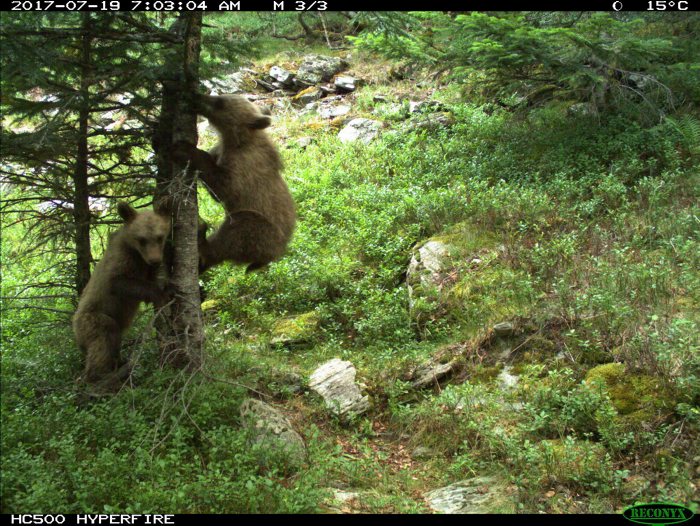Six new bear cubs born in Catalan Pyrenees
The brown bear population in the entire mountain range increased to 43 in the last year

If you were planning to go out to the Pyrenees this week, remember that you’ll be sharing the forest: specifically, with ursus arctos arctos, the Eurasian brown bear. The animal has been Europe for hundreds of thousands of years, and, as of 2017 data, the mountain range is home to 43 registered specimens.
The almost half a hundred bears are distributed between Catalonia, Aragon, Navarre and France, but the majority of the population (41) is in the central area, including an area of 4,000km squared covering areas such as that of Lleida. Two other specimens were located in the Atlantic Pyrenees, although they’ve been tracked as moving further inland.
A larger distribution and higher population
In recent years, the distribution of bears in the Pyrenees has also widened from occupying a total area of 3,800km squared, in 2015, to 4,900 in 2017. And that’s not the only thing that’s increased. With growing populations come new arrivals, and 2017 in the Pyrenees saw the birth of seven new bear cubs. This includes two males, one female, and four unidentified – in total, six were born in Catalonia.
The bear population has indeed grown in recent years, going from 31 specimens in 2014, to 32 in 2015, to 41 in 2016. Out of the 43 registered last year, there are 21 adults, and 15 young bears ranging from 2 to 4 years old.
Working towards a symbiotic relationship
But, of course, one must remember that bears are in fact wild animals. In 2017, 46 bear attacks – albeit, against livestock – were registered in Catalonia between May and September. The organization Piroslife, as well as working to increasing awareness and safety of bear attacks, is also working towards the protection of these animals, so as to achieve a balanced relationship between shepherds, beekeepers, farmers, and bears.